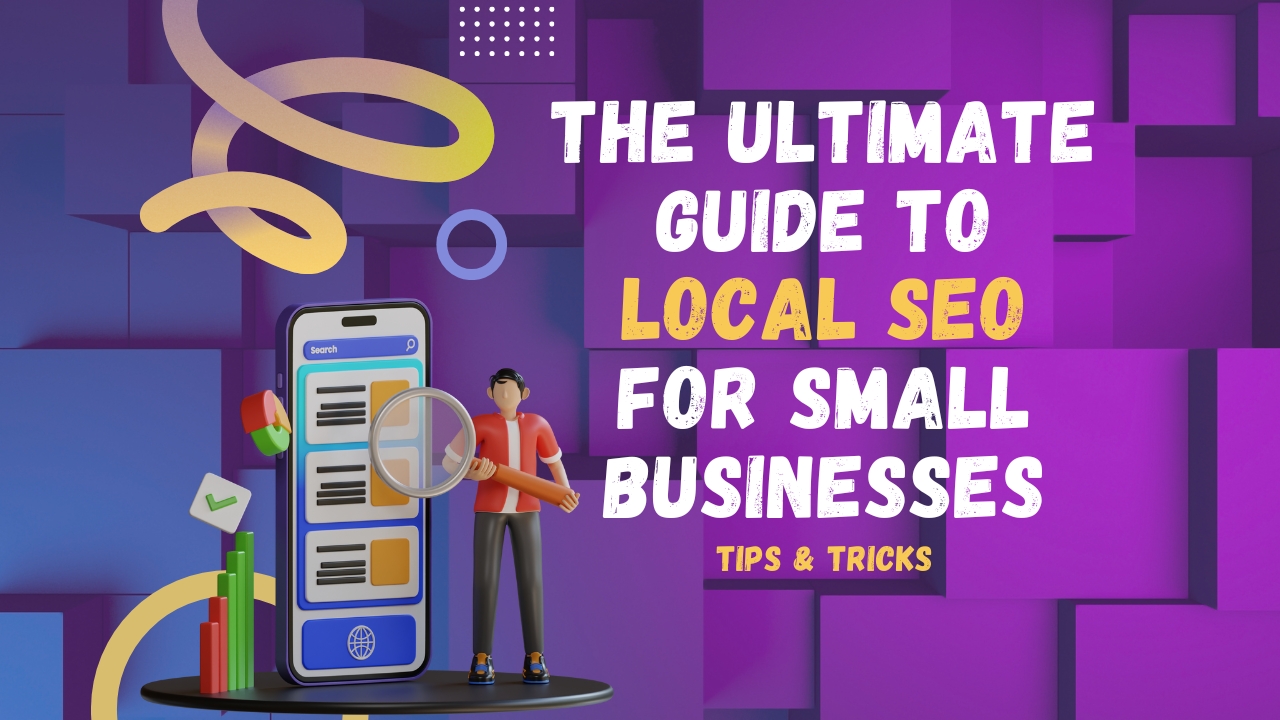
Table of Contents
ToggleThe Ultimate Guide to Local SEO for Small Businesses
In today’s digital world, having a strong online presence is crucial for businesses of all sizes. For small businesses, competing with larger enterprises can be challenging, but local SEO for small businesses offers a way to level the playing field. By optimizing your online presence specifically for local searches, you can attract more local customers, improve your online visibility, and drive more foot traffic to your brick-and-mortar store.
In this guide, we’ll cover everything you need to know about local SEO for small businesses, from the basics to advanced strategies that will help you dominate the local search results. Let’s get started!
What is Local SEO?
Local SEO (Search Engine Optimization) focuses on optimizing your business's online presence to attract more customers from relevant local searches. These searches take place on Google and other search engines, often when potential customers are looking for services or products near them.
For instance, when someone searches for “best coffee shop near me” or “plumber in [city name],” businesses with strong local SEO strategies are more likely to appear at the top of the results, especially in the “Local Pack” (the top three results shown with a map).
Why Local SEO is Important for Small Businesses
Small businesses often depend on local customers, making local SEO a powerful tool to connect with potential clients who are nearby and looking for the products or services you offer. Here are some reasons why investing in local SEO for small businesses is essential:
Increased Visibility: Local SEO helps you appear in local search results, making it easier for nearby customers to find you.
Higher Conversion Rates: People searching locally are usually ready to purchase, making local search traffic more likely to convert into sales or visits.
Builds Trust and Authority: Appearing in local search results and on Google Maps builds credibility and trust among potential customers.
Mobile Optimization: With more people using smartphones for local searches, optimizing your site for local SEO ensures you reach them at the right time.

Setting Up Your Google Business Profile (GBP)
Your Google Business Profile (formerly known as Google My Business) is a cornerstone of local SEO for small businesses. It’s a free tool from Google that allows you to manage how your business appears on Google Search and Maps. Here’s how to set it up and optimize it:
Claim Your Business: Visit Google Business Profile and claim your business. If your business isn’t listed, you can create a new profile.
Complete Your Profile: Fill in all the details like business name, address, phone number (NAP), website URL, and business category.
Add High-Quality Photos: Upload photos of your storefront, products, and services. Images can greatly impact customer engagement.
Encourage Reviews: Ask satisfied customers to leave positive reviews on your GBP. Reviews can influence rankings and build trust.
Post Regular Updates: Use Google Posts to share news, offers, and updates. It shows Google that your profile is active and relevant.
By optimizing your Google Business Profile, you increase your chances of appearing in the local pack and on Google Maps.
On-Page Optimization for Local SEO
On-page optimization is crucial for ensuring your website is search-engine-friendly and optimized for local customers. Here are some key strategies:
Use Location-Specific Keywords
- Include your focus keyword, like “local SEO for small businesses,” throughout your website content.
- Use location-based keywords in page titles, meta descriptions, and headers. For example, “Best Coffee Shop in Los Angeles” or “Affordable Plumber in Chicago.”
- Create content that speaks directly to your local audience, like blog posts about community events or local customer testimonials.
Optimize Your Contact Page
- Ensure your NAP (Name, Address, Phone Number) is consistent across all pages and matches the details in your Google Business Profile.
- Include an embedded Google Map with your business location.
- Add a contact form to make it easy for potential customers to reach you.
Local Business Schema Markup
- Use schema markup (structured data) to help search engines understand your business better. This can help you appear in rich snippets, which can increase your click-through rate.
- You can use tools like Google’s Structured Data Markup Helper to add local business schema.
- Building Local Citations and Backlinks
- Citations are online mentions of your business’s NAP on directories like Yelp, Yellow Pages, or TripAdvisor. They help Google verify your business’s existence and relevance. Here’s how to build them:
Claim Listings on Local Directories: Make sure your business is listed on popular directories like Yelp, Foursquare, and industry-specific directories.
Ensure NAP Consistency: Consistency is key. Ensure that your business’s name, address, and phone number are identical across all listings.
Build High-Quality Backlinks: Reach out to local blogs, news sites, and industry websites for opportunities to guest post or get featured. Local backlinks signal to search engines that your business is an authority in the area.
Optimizing for Mobile Users
With the majority of local searches happening on mobile devices, mobile optimization is critical for local SEO for small businesses. Here are some tips:
Responsive Design: Ensure your website adapts seamlessly to different screen sizes.
Fast Loading Speed: Mobile users expect fast-loading pages. Compress images, leverage browser caching, and minimize JavaScript.
Clickable Phone Numbers: Make it easy for customers to call you directly by ensuring your phone number is clickable on mobile devices.

Creating Localized Content
Content tailored to your local audience can boost your local SEO efforts. Here’s how to create content that resonates with your community:
Write Blog Posts About Local Events: For example, “5 Must-Attend Events in [Your City] This Summer.”
Highlight Local Partnerships: If you collaborate with other local businesses, create content around those partnerships.
Share Customer Success Stories: Feature testimonials from local customers to build trust and showcase your impact in the community.
Leveraging Social Media for Local SEO
Social media plays a role in local SEO by increasing your online presence and engaging with the local community. Here’s how to use social media effectively:
Share Local Content: Post about local events, news, and collaborations.
Use Location Tags: On platforms like Instagram and Facebook, use location tags in your posts to reach a local audience.
Engage with Local Influencers: Collaborate with influencers or bloggers in your area to expand your reach.
Tracking and Measuring Your Local SEO Success
To ensure your local SEO efforts are working, you need to track key metrics. Here are the tools you can use:
Google Analytics: Track organic search traffic and see how many visitors come from local searches.
Google Business Profile Insights: Monitor how often your business appears in local searches, how many calls you receive, and more.
Local Rank Tracking Tools: Tools like BrightLocal and Moz Local help you track your local keyword rankings and manage citations.
To make the most of local SEO for small businesses, avoid these common pitfalls:
To make the most of local SEO for small businesses, avoid these common pitfalls:
Ignoring Negative Reviews: Address negative reviews professionally to show that you care about customer feedback.
Inconsistent NAP: Ensure that your business information is consistent across all directories.
Not Updating Your Google Business Profile: Keep your profile up to date with your latest business hours, offerings, and photos
Local SEO for small businesses is a game-changer in today’s digital landscape. It allows you to reach nearby customers, increase foot traffic, and boost your online reputation without a massive marketing budget. By following the strategies outlined in this guide—optimizing your Google Business Profile, focusing on local keywords, building citations, and creating localized content—you’ll be well on your way to dominating local search results.
Start implementing these strategies today, and watch your business thrive as you connect with more local customers. Remember, local SEO is an ongoing process, but with dedication and the right approach, the results are well worth it!
With these tips, your small business will be better positioned to attract local customers and grow in today’s competitive market. Happy optimizing!










